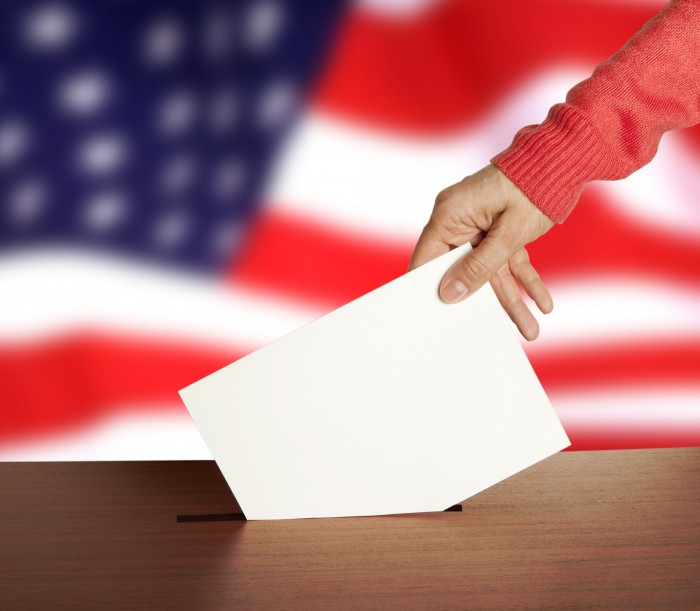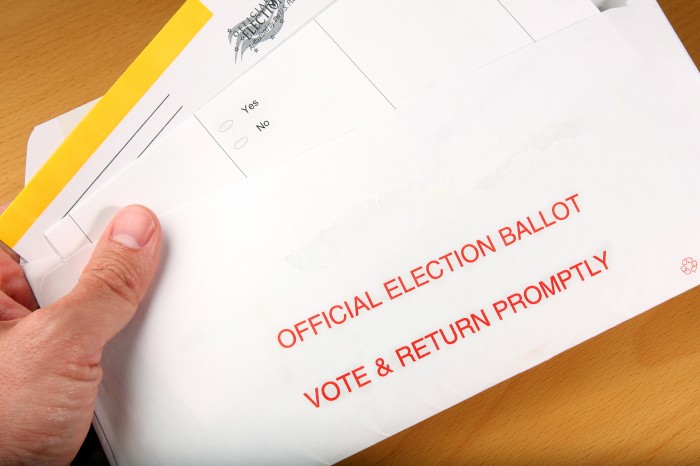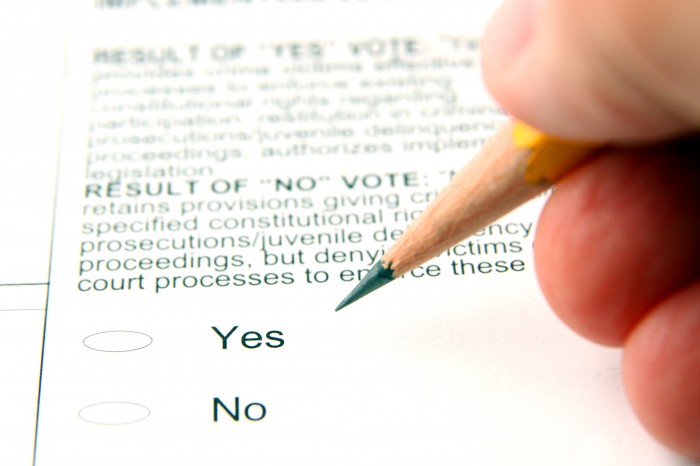 On Election Day, we all get to learn a valuable lesson. No, I’m not talking about democracy in action (although that’s pretty significant) or doing your civic duty (yes, that’s also important.) I’m talking about the basic principle of majority rule. As the British philosopher Jeremy Bentham put it: “It is the greatest good to the greatest number of people which is the measure of right and wrong.” Or, to quote Mr. Spock, “The needs of the many outweigh the needs of the few.” Of course, people don’t always vote for their own best interests (or for that of their fellow human beings). But every two years, with each election, hope springs eternal that things will get incrementally better for all of us.
On Election Day, we all get to learn a valuable lesson. No, I’m not talking about democracy in action (although that’s pretty significant) or doing your civic duty (yes, that’s also important.) I’m talking about the basic principle of majority rule. As the British philosopher Jeremy Bentham put it: “It is the greatest good to the greatest number of people which is the measure of right and wrong.” Or, to quote Mr. Spock, “The needs of the many outweigh the needs of the few.” Of course, people don’t always vote for their own best interests (or for that of their fellow human beings). But every two years, with each election, hope springs eternal that things will get incrementally better for all of us.
As a marketer, I can’t help but think about the choice between two political candidates as just another kind of A/B test. And like the contest between two different subject lines or landing page options, there’s often a clear choice, and hopefully, a clear winner. (Unless you’re dealing with low statistical confidence levels or, even worse, hanging chads.) There may be two different camps supporting each one. People may have strong – maybe even violent – opinions about which one should win. But in the end, it’s the people who decide – and the vox populi is always right. (At least, that’s what our founders thought. And they were right about a lot of other things, too.)
The Right Thing to Do
During the run-up to election day (and it seems like that time period is getting longer and longer) it’s easy to grow weary of the non-stop advertising, smear campaigns, banal editorials, endless press junkets, and heated arguments over the dinner table (or more likely these days, the Facebook feed) about the which outcome is the right one. But I think most of us would agree, the only thing worse than having regular elections would be not having them at all.
 Even though it’s not a flawless system (what with the with massive campaign donations from anonymous sources, gerrymandering, voter restrictions, and many other issues too numerous to mention), regular elections are the hallmark of a democracy. It’s an imperfect union, and it’s up to all of us to get out and vote on a regular basis in order to make it more perfect. Voting can also be a hassle when time is tight… after all, who has time to go stand in line? But we do it (especially those of us who are lucky enough to live in a state with voting by mail) because it’s the right thing to do.
Even though it’s not a flawless system (what with the with massive campaign donations from anonymous sources, gerrymandering, voter restrictions, and many other issues too numerous to mention), regular elections are the hallmark of a democracy. It’s an imperfect union, and it’s up to all of us to get out and vote on a regular basis in order to make it more perfect. Voting can also be a hassle when time is tight… after all, who has time to go stand in line? But we do it (especially those of us who are lucky enough to live in a state with voting by mail) because it’s the right thing to do.
So it is with A/B testing your marketing. It’s an important part of the design and development process, and it’s also the right thing to do. It might be seen as a hassle or an extra step when time is tight (and when is time not tight?) but it’s a great way to quickly determine the best possible email, landing page, form, and so on. Best of all, you don’t have to rely on your instincts. The people will vote – with their clicks.
The System Works
One of the biggest benefits of A/B testing that I’ve discovered in my marketing career is that it’s a great way to end an argument. If my boss thinks that pink ponies are the way to go on a landing page, and my opinion is that giant robots are the only possible solution, I can use the magic words, “let’s test them both, and look at the data.” You can’t argue with numbers. (Well you can… and if you’re my boss, sometimes you do.) But there have been many times when I was completely confident about the outcome of an A/B test, only to be shocked by the results. (The same thing happened when I woke up the next morning after the 2000 presidential elections, but that’s a story for another day.)
There’s another way marketing is like politics – it turns out you really should sweat the small stuff. Minor elections for school boards and county commissioners may not seem important to some voters, but they can have a big impact – not only local politics but sometimes on state and federal levels as well. The “think small” approach is also true for testing marketing campaigns. When you run an A/B test, you can try out infinite combinations of designs and copy, making the tiniest changes to see if they make a difference. Should the banner be blue or green? Should the call to action say “Act Now” or “Get Started”? What about the button – drop shadow, or no drop shadow? It’s amazing that these minor tweaks can sometimes make a huge difference.
The Endless Cycle
 One other way A/B testing is like elections is this: it never stops. The day after Election Day, we all know that there will be parties, concession speeches, hangovers, recriminations, and non-stop analysis by the pundits. There may even be recounts (but hopefully not). Most of all, you can count on this: The prognostications about the next elections will begin right away. It’s the one thing you can depend on in this uncertain world.
One other way A/B testing is like elections is this: it never stops. The day after Election Day, we all know that there will be parties, concession speeches, hangovers, recriminations, and non-stop analysis by the pundits. There may even be recounts (but hopefully not). Most of all, you can count on this: The prognostications about the next elections will begin right away. It’s the one thing you can depend on in this uncertain world.
And so it is with A/B testing. Today’s shiny red button with the whiz-bang conversion rates will quickly become tomorrow’s dud. Testing is a journey, not a destination. It may seem like a never ending treadmill, but really, it’s an exciting process. Consider yourself a dedicated scientist, constantly testing every hypothesis, prodding every outcome, and demanding fresh data when the old set of numbers gets stale. By continually testing your marketing, you can continually optimize the results. And those results will make you look like a winner in the eyes of your constituents and colleagues.
So be sure to cast your ballot for A/B testing in your next marketing campaign. And don’t forget to vote!
Ready to get started? Try this free online A/B testing tool and find the best version faster.
